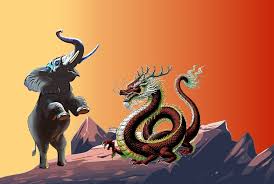
China’s Strategic Investments: China’s $3.6 billion Chancay Deep Sea Port project in Peru highlights its expanding influence in Latin America, mirroring its investment approach in Africa, challenging U.S. dominance in the region.
India’s Soft Diplomacy: Prime Minister Modi’s visit to Guyana underscores India’s focus on developmental assistance and strengthening bilateral ties, contrasting China’s “hard diplomacy” through large-scale infrastructure projects.
Geopolitical Significance: Both China and India are leveraging their positions to deepen engagement in Latin America, with India emphasizing partnerships that address specific challenges faced by the region.
This year, the 19th Asia-Pacific Economic Conference was held in Lima, Peru, where the economies of the Asia-Pacific region gathered for dialogue. One of the major highlights of the event was President Xi Jinping’s visit to Peru. During the conference, he held meetings, including bilateral discussions with President Biden, focusing on establishing a free trade platform for the Asia-Pacific countries, which together contribute nearly 60% of the global GDP.
The Asia-Pacific Economic Cooperation (APEC) was established in 1989, following the success of ASEAN. While it has significant potential, geopolitical rivalries and economic confrontations have hindered its progress. However, this year’s Asia-Pacific Economic Conference was particularly noteworthy.

One key highlight was the inauguration of the $3.6 billion Chinese-funded Chancay Deep Sea Port on the western coast of Peru. This port is expected to become a major hub for Peru’s maritime economy. The event marked a time when Chinese investments in Latin America have significantly increased. China has recently funded several large-scale projects in the region, from Brazil to Peru, aiming to leverage the abundant resources and maritime potential of these countries. More importantly, this economic push represents China’s broader geopolitical and economic strategy, especially in areas traditionally influenced by the United States.
The United States has expressed concerns over China’s growing investments in Latin America, viewing them as a challenge to its geopolitical and economic influence in the region.

China’s significant presence in Latin America mirrors its growing investments in Africa, as China views both regions as potential hubs for expanding its influence. Being part of the Global South, these regions offer strategic opportunities for China to strengthen its geopolitical and economic standing through large-scale investments.
While China is making notable strides in Latin America, Indian Prime Minister Narendra Modi recently paid an official visit to Guyana, one of the wealthiest countries in the region. This visit holds significant importance not just bilaterally but also as part of India’s broader strategy to deepen ties with Latin America, recognizing its economic and geopolitical potential.
India’s relationship with Guyana is longstanding. India was among the first to provide aid to Guyana during critical times and has continued to offer economic packages and investments. The visit is also significant because Guyana, an oil-rich nation, is home to the contested Stabroek oil field, which is a point of contention between Guyana and Venezuela. While India has not taken an official stance on the issue, Prime Minister Modi’s visit underscores India’s solidarity with Guyana during this sensitive time.
The timing of these events is noteworthy: as Chinese President Xi Jinping visited Peru to expand China’s influence, Prime Minister Modi’s visit to Guyana highlights India’s intent to strengthen government-to-government relations in Latin America and carve out its space in the region.
A notable difference between China’s and India’s approaches in Latin America lies in their investment strategies. While China focuses on “hard diplomacy” through heavy infrastructure projects and large-scale investments, India’s efforts are more tailored toward developmental assistance and addressing specific challenges faced by these countries. This softer approach reflects India’s unique positioning in the region.
Reference
1)https://shipandbunker.com/news/world/863989-chinas-president-xi-opens-new-port-in-peru
Aayush Pal is a freelance writer on contemporary geopolitical developments. The views expressed in his work are entirely his own.
